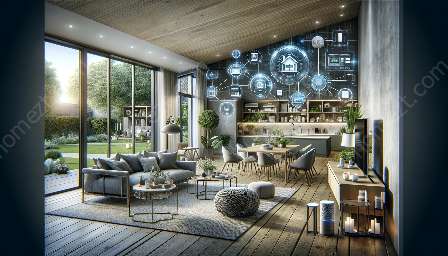In today's digital era, configuring home automation systems has become an essential aspect of creating a truly smart home. By integrating home connectivity and networking with intelligent home design, you can streamline your everyday tasks, enhance security, and improve energy efficiency. This comprehensive guide will walk you through the key considerations, components, and best practices for setting up a home automation system that aligns with your needs and preferences.
Understanding Home Automation Systems
Home automation involves the use of technology to control and automate various devices and systems within a household. These can include lighting, heating, ventilation, air conditioning, security cameras, door locks, and more. By connecting these devices to a central hub or network, homeowners can remotely monitor and manage them using their smartphones or other devices, thereby enhancing convenience and efficiency.
Key Components of Home Automation Systems
Before configuring a home automation system, it's important to understand the key components that make up the ecosystem. These include:
- Central Hub: This serves as the core of the automation system, communicating with and controlling the connected devices.
- Smart Devices: These encompass a range of connected devices such as smart thermostats, smart switches, smart outlets, and smart sensors.
- Network Connectivity: Reliable Wi-Fi or other networking technologies are crucial for seamless communication between the central hub and smart devices.
- Control Interface: Whether it's a dedicated app, voice command, or a control panel, the interface allows users to interact with and command the automated devices.
Integration with Home Connectivity and Networking
Configuring a home automation system involves ensuring seamless integration with home connectivity and networking. This includes optimizing the network infrastructure to support the increased traffic generated by connected devices. Prioritizing connectivity stability and speed is essential to prevent any interruptions in automation functionality.
Moreover, implementing security measures to safeguard the network from potential cyber threats is paramount. Utilizing firewalls, secure passwords, and regular software updates can protect the home automation system from unauthorized access and data breaches.
Intelligent Home Design for Automation
Intelligent home design goes hand in hand with configuring a home automation system. Planning the placement of smart devices, sensors, and control interfaces strategically can elevate the overall functionality and aesthetic appeal of the home. Concealing wiring, incorporating smart lighting fixtures, and integrating automated window treatments are some key aspects of integrating home automation seamlessly into the design.
Furthermore, leveraging intelligent design to maximize energy efficiency is a key benefit of home automation. By integrating smart thermostats, energy-efficient lighting, and automated climate control, homeowners can reduce energy consumption and lower utility costs while minimizing their environmental impact.
Best Practices for Configuring Home Automation Systems
When setting up a home automation system, the following best practices can help ensure a smooth and effective implementation:
- Assessing Needs: Understanding your specific requirements and defining the desired outcomes is crucial for selecting the right devices and components.
- Scalability: Building a system that can scale with evolving needs ensures future-proofing and flexibility.
- Interoperability: Choosing devices and technologies that are compatible and can communicate seamlessly with each other avoids compatibility issues and simplifies integration.
- User Training: Providing adequate training to household members on using the automation system promotes effective utilization and minimizes user-related issues.
In conclusion, configuring home automation systems is a pivotal step towards creating a modern, connected, and intelligent home. By aligning home connectivity and networking with intelligent home design, homeowners can enjoy the convenience, security, and energy efficiency benefits offered by a seamlessly integrated home automation ecosystem.


